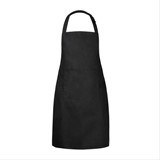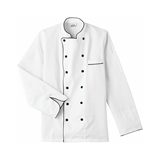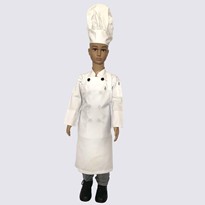In the movie, Cooper’s character inherits his mentor’s knives – they’re given to him wrapped in a leather belt, still bearing their previous owner’s initials. As soon as he receives them, Cooper’s character gets his mojo back and opens up a successful restaurant.
My point being, a good set of kitchen knives can and should last a long time.
They will be your companions in the kitchen for years and you’ll soon figure out which are your favourite knives. However, it’s often bewildering trying to establish how many you need alongside all your other kitchen accessories.
How many knives are vital for meal preparation, and how many are just gimmicks? If you are not sure, don’t worry, as one of the biggest catering suppliers in Perth, WA we’re here to help cut through the noise and offer definitive answers.
Types Of Knives
There is a wealth of knife options out there, and each serves a unique purpose in the kitchen. The information below will help you identify the essentials that every kitchen should have on hand.
The Chef’s Knife
First up is a chef’s knife. These can come in a range of sizes, from about 15cm to 30cm. These are large, unserrated blades and are very versatile, although its primary use is chopping and slicing. Depending on how much of a rocking motion you work up while you’re cutting, you may want a blade with more of a curve.
The Utility Knife
Second is a utility knife. Again, these are unserrated, come in a range of sizes, and are also very versatile. Along with your chef’s knife, your utility knife is probably the one you’ll be using the most.
The Turning Knife
Next up is a turning or fruit knife. These are small knives with relatively short blades that curve downwards, a bit like a beak. It is used for any delicate work on fruit or vegetables, such as coring and carving. The beak shape is useful for when you’re working on a rounded surface.
The Bread Knife
Then there’s a bread knife – a long, serrated blade with a straight edge. And yes, it’s for cutting bread. Try to cut bread with an unserrated blade and not only will you end up with a blunt knife, but your bread slices will look sloppy. Invest in a good bread knife, and rise to the top.
The Tomato Knife
A tomato knife’s serration will help to cut tomatoes without bruising their flesh. Very little pressure needs to be applied when slicing.
The Cleaver
A cleaver is, of course, more than handy when it comes to chopping meat. Sure, a filleting knife is mighty useful for filleting fish, and a boning knife is excellent for carving meat off a bone or a joint, but you’ll want to know how to wield a cleaver.
The Japanese Santoku Knife
A Japanese Santoku knife is perfect if what you’re slicing is sticky or very thin, as the dimples along the blade make it less adhesive for what you’re chopping. A two-handled blade is also perfect for when you need something cut fine, really quickly.
The Right Knives For The Right Establishment
All of these options depend on what type of establishment you’re working in and what products you offer – for instance, are you a cafe punching out lunch orders at breakneck speed? Then you probably won’t need a cleaver, but you will want more than one good bread knife.
Any à la carte establishment that servers carved radish or stewed pear will need turning knives. Commercial kitchens, whether you work in hospitality or the roving facilities of a catering company, are busy, high heat places that depend on efficiency. Here, you’ll want all the essential knives that will help you get the job done quickly.
Understanding the needs of your business will go a long way to making sure you have the right knives on hand.
Quality Vs Quantity
One common mistake made by chefs and kitchens is to go for as many knives as possible for the lowest price. However, just a few knives from a trusted legacy brand (Victorinox is a good example) will serve you better in the long-term.
When looking for knives, a telltale sign of a poor quality knife is if the metal from the blade does not continue right up into the safety handle.
Plastic handles are often typical of this. If the manufacturer has scrimped on metal by keeping blades short, you risk the handle breaking off.
Knife Care & Maintenance
Remember to take good care of your knives! They should be dried immediately after they are washed and sharpen, sharpen, sharpen. No matter how good the knife is when you buy it, it will become blunt with use.
Make sharpening a regular part of your kitchen routine, and you’re good to go – happy slicing!
If you want more information on knives and foodservice and hospitality supplies – check our products out or contact Stanlee Hospitality Supplies, we are one of the biggest kitchenware suppliers in Perth, WA and we are here to help.

















